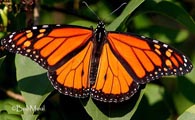Native Plants
Search for native plants by scientific name, common name or family. If you are not sure what you are looking for, try the Combination Search or our Recommended Species lists.
Asclepias speciosa
Asclepias speciosa Torr.
Showy Milkweed
Asclepiadaceae (Milkweed Family)
Synonym(s): Asclepias giffordii
USDA Symbol: ASSP
USDA Native Status: L48 (N), CAN (N)
A stout, sparingly branched, pubescent perennial, 1 1/2-3 ft. tall, with large, oval, blue-green leaves and showy, spherical clusters of rose-colored flowers. Flowers occur at the top of the stem and on stalks from leaf axils. A grayish, velvety plant with erect leafy stems and with umbels of star-like pinkish flowers in upper axils and at top. Sap milky.
This species is closely related to the Common milkweed, A. syriaca, with which it sometimes hybridizes at the eastern limits of its distribution. These species are similar in appearance and growth form (tall and robust), but can be distinguished by the layer of fine white hairs on A. speciosa and flowers that look like small crowns. Unlike A. syriaca, A. speciosa does not form large clones.
Plant Characteristics
Duration: PerennialHabit: Herb
Root Type: Tap
Leaf Arrangement: Opposite
Leaf Complexity: Simple
Leaf Shape: Ovate
Leaf Venation: Pinnate
Leaf Margin: Entire
Fruit Type: Follicle
Size Notes: Generally 1 1/2-3 ft, but can reach 6 ft (1.8 m) under favorable conditions.
Leaf: Blue-green color, course, and hairy. Leaf arrangement is opposite and attachment is petiolate. Leaf petioles are 1/8-3/8 in (4-10mm) long. Stems stand erect. Oval shaped, 3-8 in (7 1/2 - 20 cm) long and 1-4 in (2 1/2-10 cm) wide.
Fruit: Pods 3-4 in (7 1/2-10 cm) long. Erect, with hair covering entire pod.
Bloom Information
Bloom Color: Pink , Green , PurpleBloom Time: May , Jun , Jul , Aug , Sep
Distribution
USA: AZ , CA , CO , IA , ID , IL , KS , MI , MN , MT , ND , NE , NM , NV , OK , OR , SD , TX , UT , WA , WI , WYCanada: AB , SK
Native Distribution: S. Man. & w. MN to B.C., s. to TX & CA
Native Habitat: Found in habitats ranging from sunny and dry to moist in savannas, prairies, road-sides, old fields, and meadows.
Growing Conditions
Water Use: MediumLight Requirement: Sun
Soil Moisture: Moist
CaCO3 Tolerance: Medium
Soil Description: Can grow in course, medium, and fine soils.
Conditions Comments: Not shade tolerant. Must be in open spaces.
Benefit
Use Wildlife: Hummingbirds.Use Other: The fibers from this plant were used by Native Americans to make ropes, nets and other items.
Warning: This is one of the least toxic of the milkweeds. There are even recipes for preparing this species as a vegetable, but the plants should be positively identified as some of the milkweeds are highly poisonous, and eating them can result in death.
Conspicuous Flowers: yes
Fragrant Flowers: yes
Attracts: Butterflies , Hummingbirds
Larval Host: Monarch
Value to Beneficial Insects
Special Value to Native BeesSpecial Value to Bumble Bees
Special Value to Honey Bees
Supports Conservation Biological Control
This information was provided by the Pollinator Program at The Xerces Society for Invertebrate Conservation.
Butterflies and Moths of North America (BAMONA)
|
Monarch (Danaus plexippus)  Larval Host |
Propagation
Propagation Material: SeedsDescription: Root cuttings can be taken in fall or early spring. Seeds may be sown outside in late fall or the following spring. Germination of spring-planted seeds is enhanced by moist stratification.
Seed Treatment: Stratify 3 months at 40 degrees.
Commercially Avail: yes
Find Seed or Plants
Order seed of this species from Native American Seed and help support the Wildflower Center.
Find seed sources for this species at the Native Seed Network.
National Wetland Indicator Status
| Region: | AGCP | AK | AW | CB | EMP | GP | HI | MW | NCNE | WMVE |
| Status: | FAC | FAC | FAC | FAC | FAC | FAC |
From the National Organizations Directory
According to the species list provided by Affiliate Organizations, this plant is on display at the following locations:Santa Barbara Botanic Garden - Santa Barbara, CA
NPSOT - Austin Chapter - Austin, TX
Native Seed Network - Corvallis, OR
Bibliography
Bibref 1186 - Field Guide to Moths of Eastern North America (2005) Covell, C.V., Jr.Bibref 1185 - Field Guide to Western Butterflies (Peterson Field Guides) (1999) Opler, P.A. and A.B. Wright
Bibref 946 - Gardening with Prairie Plants: How to Create Beautiful Native Landscapes (2002) Wasowski, Sally
Bibref 841 - Native Alternatives to Invasive Plants (2006) Burrell, C. C.
Bibref 1218 - Tending the Wild: Native American Knowledge and the Management of California's Natural Resources (2006) Anderson, M. Kat
Search More Titles in Bibliography
Additional resources
USDA: Find Asclepias speciosa in USDA PlantsFNA: Find Asclepias speciosa in the Flora of North America (if available)
Google: Search Google for Asclepias speciosa
Metadata
Record Modified: 2018-11-14Research By: TWC Staff